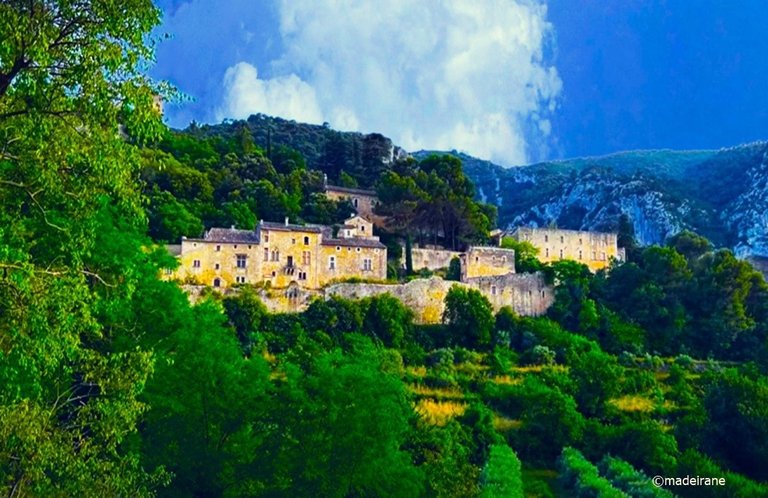
The journey through Provence always gives you stunning views of the south of France: snow-white mountains, the sea, vineyards, small towns, and, of course, castles. The road is very easy and pleasant, although one cannot help but note its specificity - countless intersections with roundabouts. The main disadvantage of such intersections is that the navigator does not always tell you which exit to take.
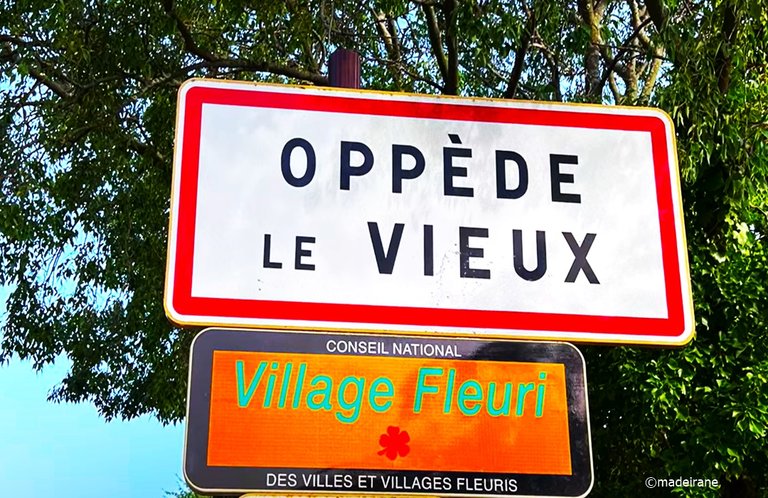
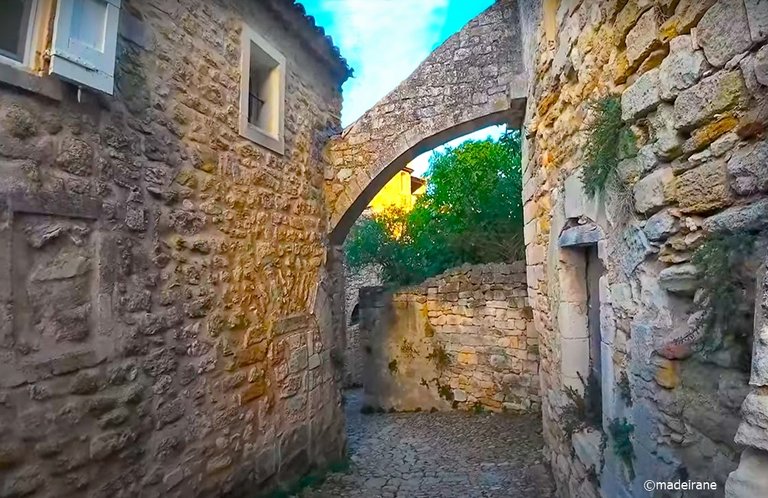
Already approaching the destination, I found out that there are two Oppedes: old and new. New Oppede is a small town in the lowland. There are old stone houses covered with wild grapes, several cafés and a couple of bakeries. It is cozy, picturesque, calm, but there is nothing interesting here, but old Oppede (Oppède-le-Vieux), located in the mountains, deserves a description.
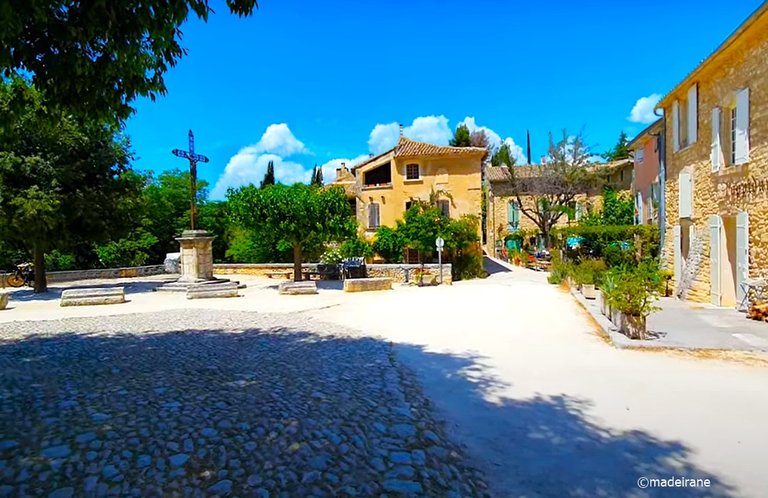
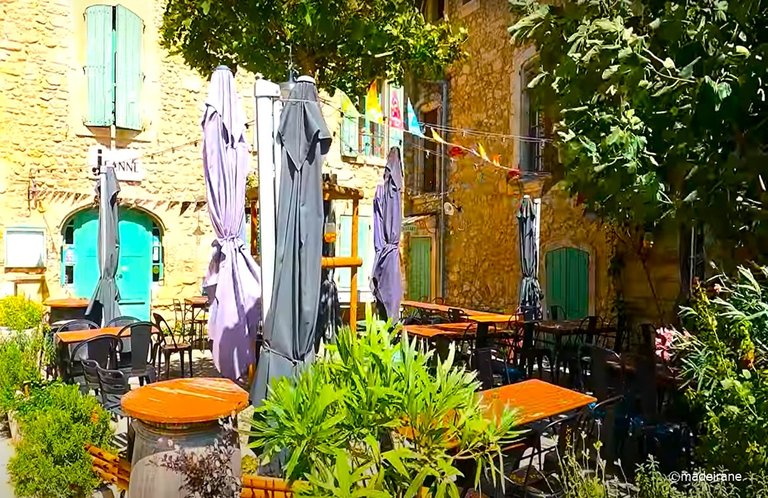
Do you remember cities lost in the jungle? This is almost the same, just not a jungle but a green forest. But the atmosphere is close: a dead city, partially absorbed by nature. However, some of the houses are now inhabited again, and behind the ancient Gothic stone windows, you can see modern double-glazed windows.
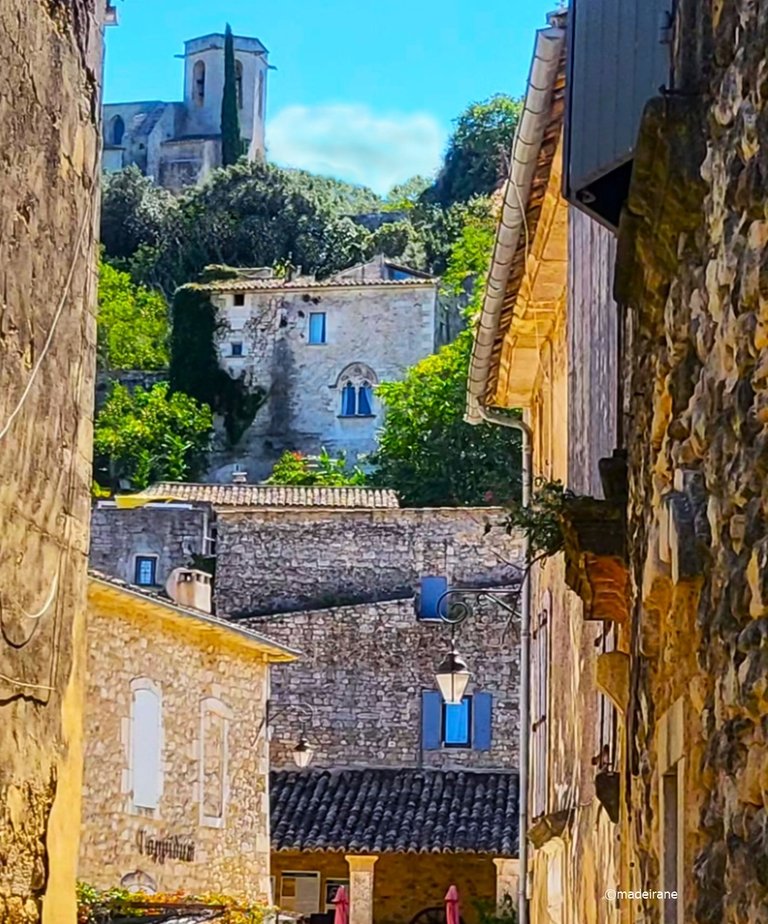
Such villages in the Provence region were popular in the Middle Ages because they provided better protection.They were usually built on the top of a hill, around a central castle, and were surrounded by a thick fortified wall. But naturally, such conditions did not contribute to the convenience of living in the villages themselves, so only a few of them retained their inhabitants after the 19th century. Most of them were abandoned along with the loss of their strategic position for defense. Today, new generation of artists, artisans, and tourist companies restore many of such abandones villages.
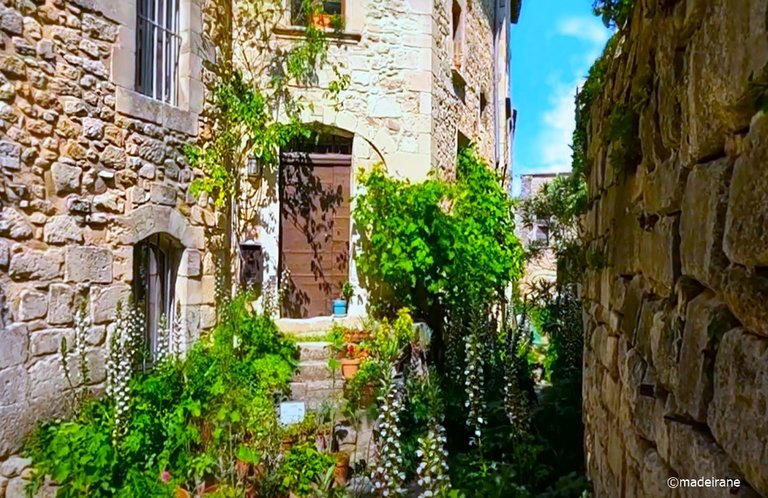
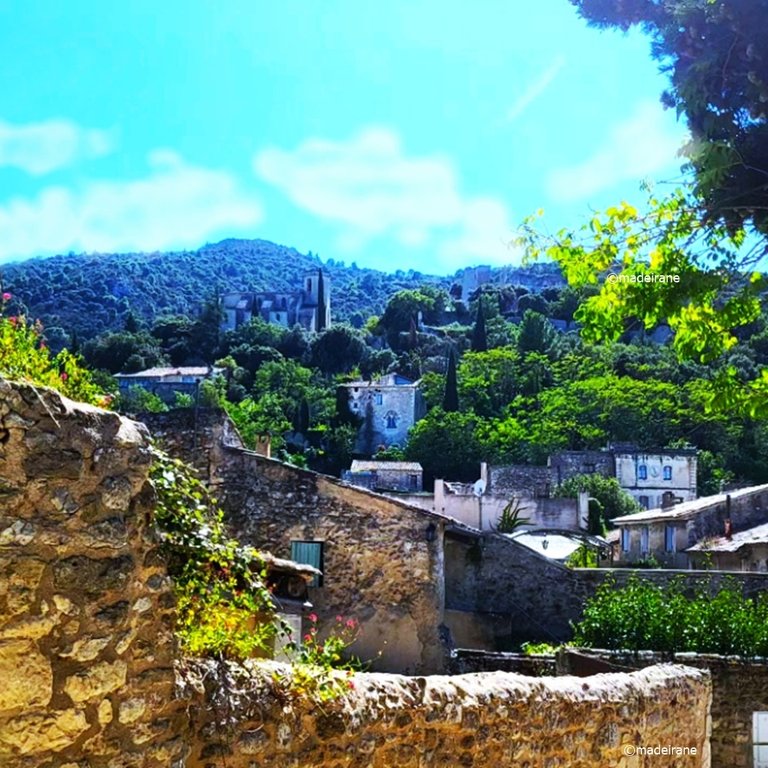
The new village of Oppede has grown further down the hill due to the inconvenient position for living in the old village. The old part - Oppede-le-Vieux - was completely abandoned for some time, and only in the last 60 years has it been restored by enthusiasts.
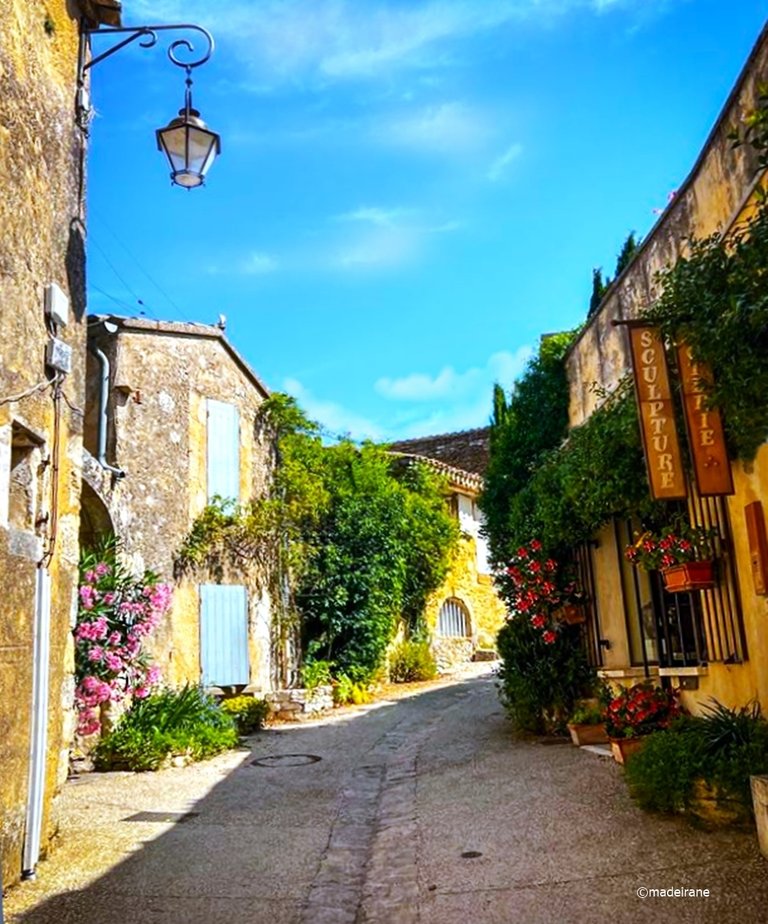
In the old Oppédé you find yourself in a completely different era. It seems that little has changed here since the 12th century (and the first mentions of the city date back to this time), except for a few tourists and a souvenir shop with the ubiquitous lavender sachets and ceramic cicadas.
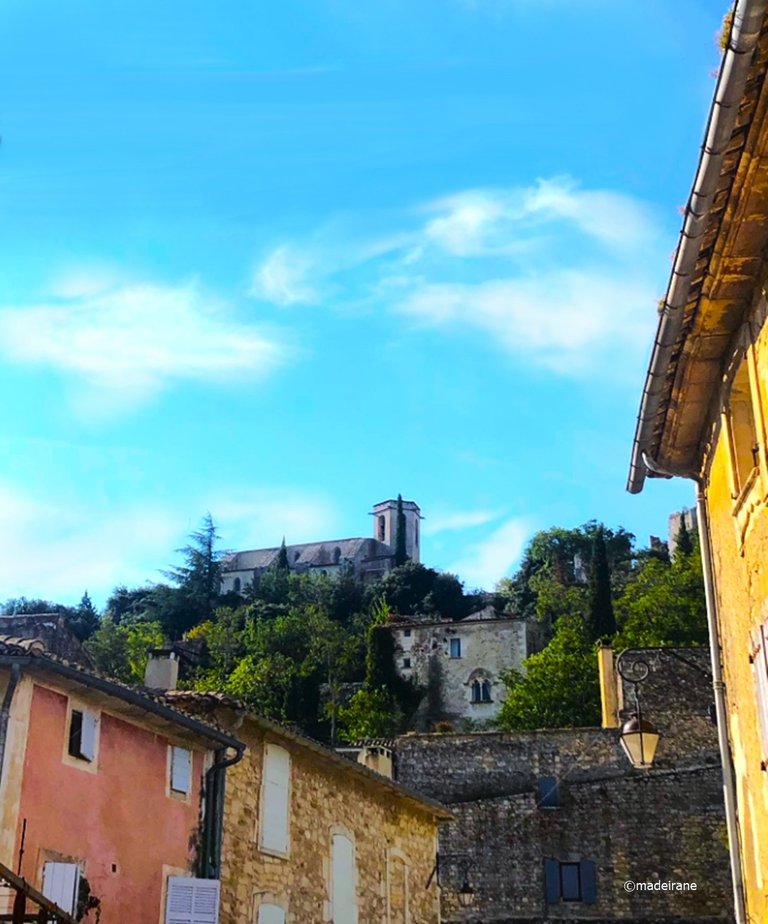
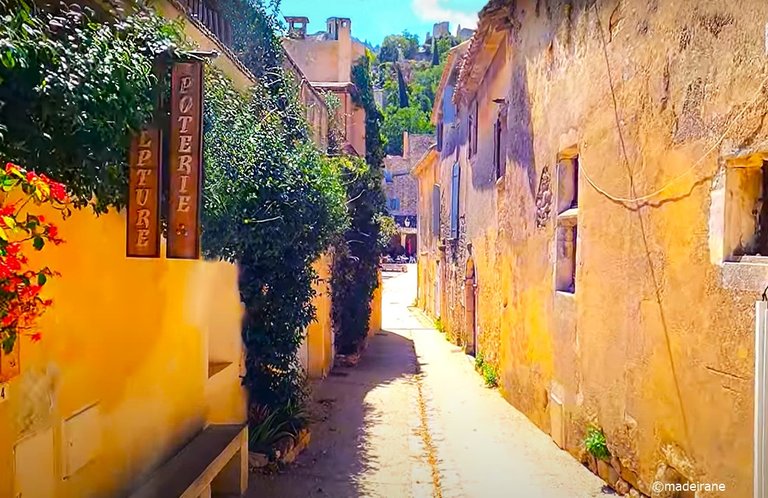
In the 18th and 19th centuries, residents began to leave it and move to the plain in the 18th-19th centuries. The fact is that the village was built on a mountain and had narrow streets. With the development of technology, living in such a place has become extremely inconvenient. In 1909, the resettlement was completed, and the village was deserted.
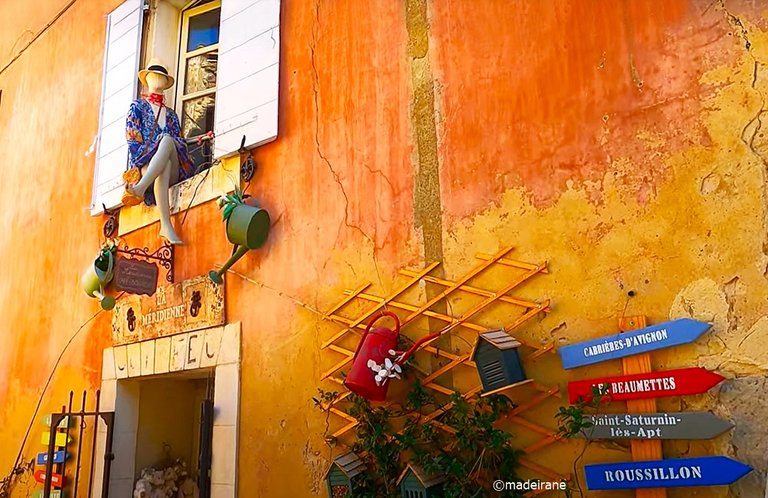
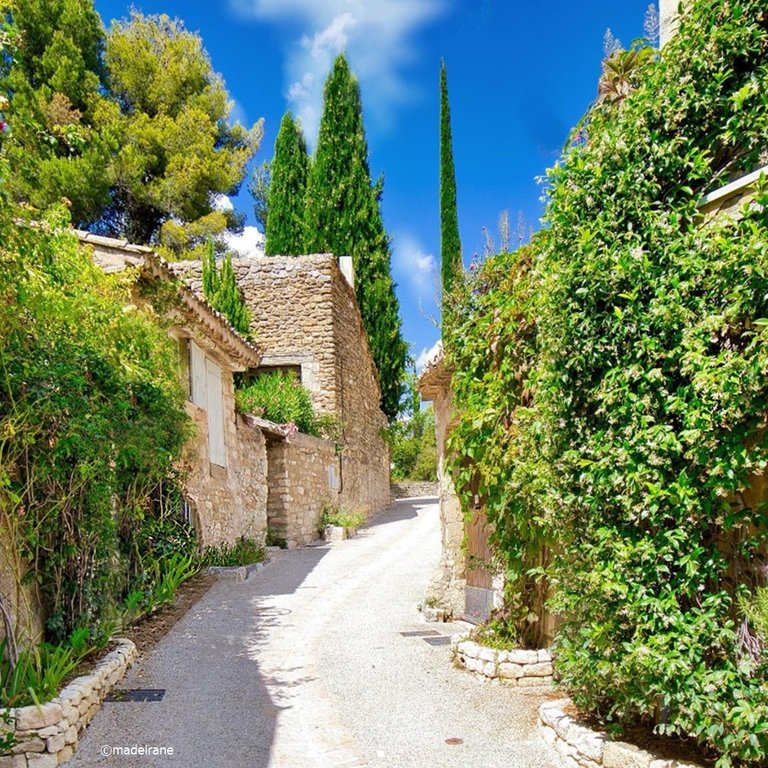
Stone paths, houses, a ruined castle, all this remains from the 12th-13th centuries! When you go up, pay attention to the strange semicircular caves paved with brick. These are rooms right on the rocks. That is how people used to live. And here, they have remained untouched. During the Second World War, artists and sculptors known as Le Groupe d'Oppede hid here. There are practically no tourists, so walking along these empty paths was even a little scary.
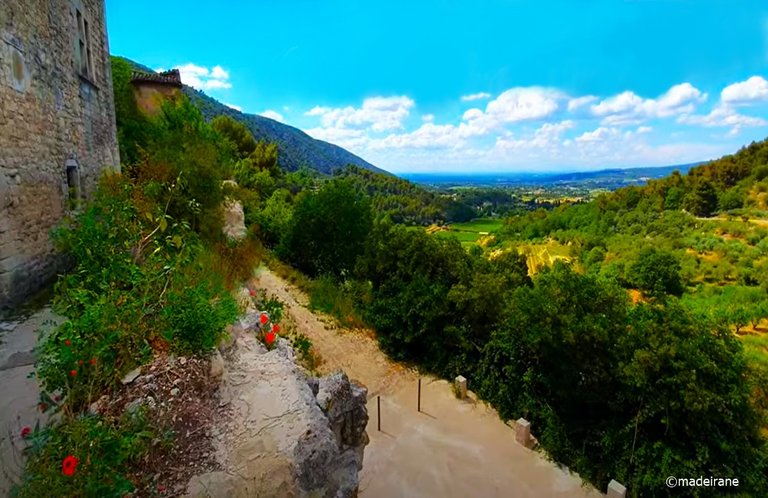
In Oppede, it is worth taking a look at the abandoned part of the city, although it is worth mentioning: abandoned does not mean forgotten and unkempt. The old castle, the local Notre Dame, the post office and the hospital look as if they were “destroyed” by the best theater set designers. The French respect their historical heritage, are proud of it, and maintain it in perfect condition. There is no asphalt, no urns, and no flower beds. Moreover, all communications are carefully hidden under the old stone, again, a moderately destroyed road.
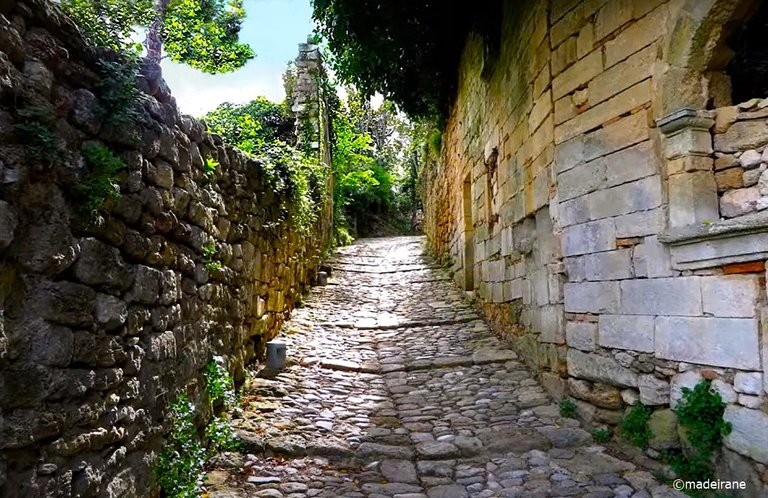
Nevertheless, the village is very interesting — both as an example of the “abandoned” mountain villages of Provence, which have preserved the ancient spirit, and simply as an architectural monument of bygone eras. Unlike the "dead" town of Les Baux-de-Provence, overrun with tourists, the dead Oppede-le-Vieux is a truly quiet, peaceful place where you can see with your own eyes the efforts of enthusiasts to restore its appearance. So if you like popular tourist attractions, you can skip this place. But if you want to see true authenticity, then this place should fit you.
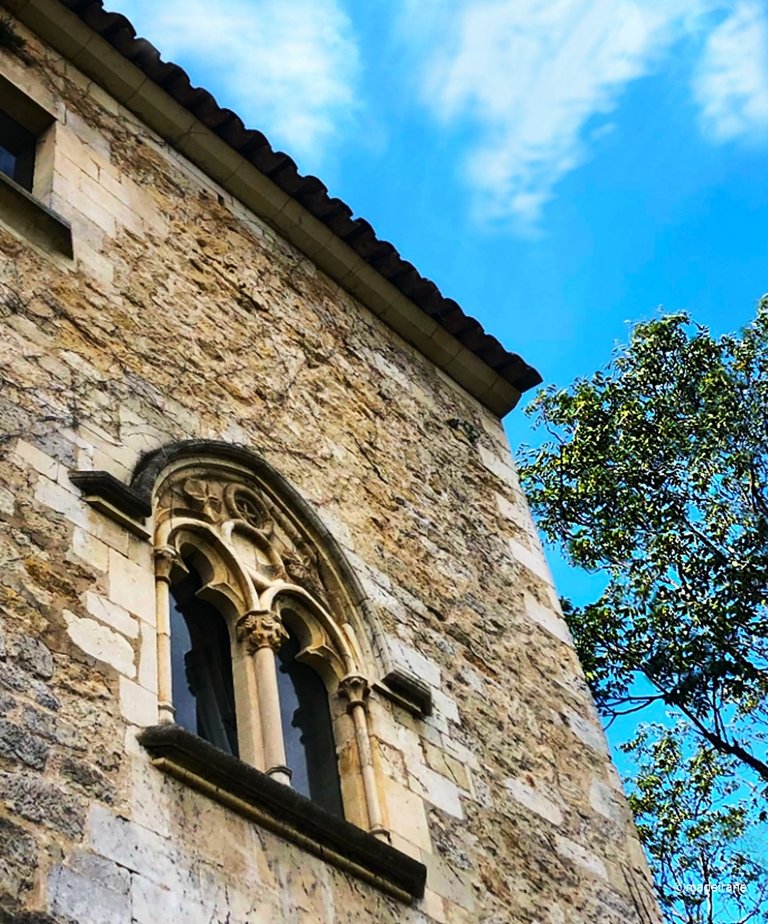
The pleasure of visiting Oppede-le-Vieux consists mainly in strolling along its uneven streets and alleys, admiring the old houses and traditional Provençal architecture (such as the bells and campanile on the old stone tower, or the arched passages, or the remains of the original town halls). You can walk along the same paths that the locals have been walking on for at least 500 years!
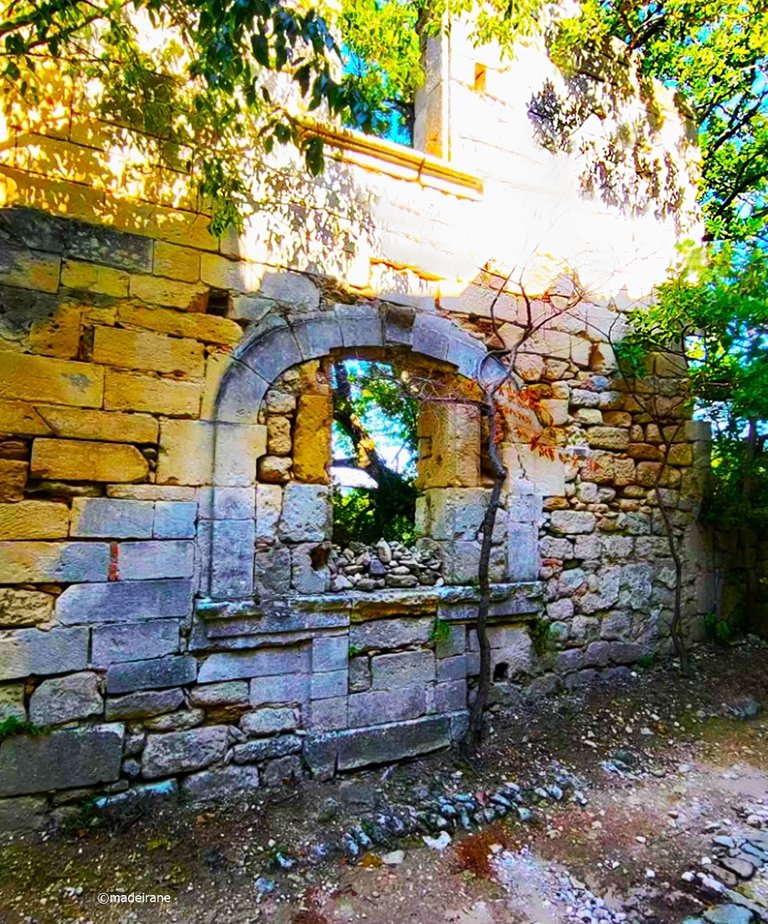
In some places, you can see completely restored and even residential buildings. In other places, only pieces of walls remain, where vegetation has emerged as the winner, entwining old stones with wild growth. For a walk, it is better to stock up on comfortable shoes, since you will have to climb quite a bit from the parking lot located below.
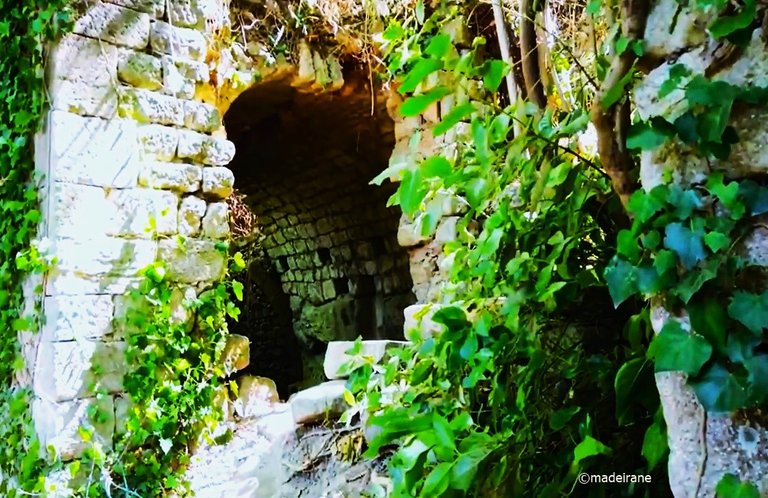
In the center of the town, on top of a hill, stands the church of Notre Dame d’Alidon, which was built in the 12th century. It has a hexagonal tower, so it means that this place is historicaly significant. The church was restored in the 16th century - its appearance combines both Romanesque and Gothic elements.
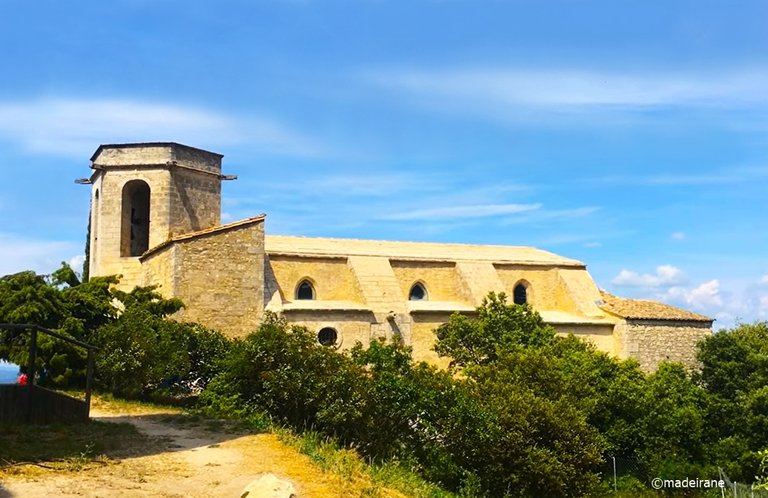

Inside the church, you can see first-hand the process of restoring ancient buildings: walls that have been stripped but in some places have already been restored, frescoes that have faded with time...

Two hours are enough to walk the entire village from top to bottom, although, you can spend much more time here just walking around the area and admiring the views.

The place is interesting primarily because everything here is original. The restoration (in the 16th century) affected only the church of Notre Dame D'Alidon, but everything else is authentic.
💝💝💝💝💝💝💝💝💝💝
With love, @madeirane
Photos are taken by me.
© 2024
Translated from Lithuanian with DeepL.com (free version)
Keliaujant per Provansą visada atsiveria nuostabūs Prancūzijos pietų vaizdai: sniego baltumo kalnai, jūra, vynuogynai, maži miesteliai ir, žinoma, pilys. Kelias labai lengvas ir malonus, nors negalima nepastebėti jo specifikos - nesuskaičiuojamų sankryžų su žiedinėmis sankryžomis. Pagrindinis tokių sankryžų trūkumas yra tas, kad navigatorius ne visada nurodo, kuriuo išvažiavimu reikia važiuoti.
Jau artėdami prie kelionės tikslo sužinojome, kad yra du Oppede: senasis ir naujasis. Naujoji Oppede yra nedidelis miestelis žemumoje. Jame stovi seni akmeniniai namai, apaugę laukinėmis vynuogėmis, kelios kavinės ir pora kepyklų. Jis jaukus, vaizdingas, ramus, bet nieko įdomaus čia nėra, o štai kalnuose įsikūręs senasis Oppede (Oppède-le-Vieux) nusipelno aprašymo.
Ar prisimenate džiunglėse pasiklydusius miestus? Tai beveik tas pats, tik ne džiunglės, o žalias miškas. Tačiau atmosfera artima: negyvas miestas, iš dalies absorbuotas gamtos. Vis dėlto kai kuriuose namuose dabar vėl gyvenama, o už senovinių gotikinių akmeninių langų matyti šiuolaikiniai dvigubi langai.
Tokie kaimai Provanso regione buvo populiarūs viduramžiais, nes buvo geriau apsaugoti. Paprastai jie buvo statomi ant kalvos viršūnės, aplink centrinę pilį ir apsupti stora gynybine siena. Tačiau natūralu, kad tokios sąlygos neprisidėjo prie gyvenimo patogumo pačiuose kaimuose, todėl po XIX a. tik keli iš jų išlaikė savo gyventojus. Dauguma jų buvo apleisti kartu su strateginės gynybinės padėties praradimu. Šiandien nauja menininkų, amatininkų ir turizmo įmonių karta atkuria daugelį tokių apleistų kaimų.
Naujasis Oppede kaimas išaugo toliau nuo kalvos dėl nepatogios padėties gyventi senajame kaime. Senoji dalis - Oppede-le-Vieux - kurį laiką buvo visiškai apleista ir tik per pastaruosius 60 metų entuziastai ją atkūrė.
Senajame Oppede atsidursite visai kitoje epochoje. Atrodo, kad nuo XII a. čia mažai kas pasikeitė (nuo to laiko minimi ir pirmieji miesto paminėjimai), išskyrus keletą turistų ir suvenyrų parduotuvę su visur esančiais levandų maišeliais ir keraminėmis cikadomis.
XVIII-XIX a. gyventojai ėmė jį palikti ir persikėlė į lygumą. Faktas tas, kad kaimas buvo pastatytas ant kalno ir turėjo siauras gatveles. Tobulėjant technologijoms, gyventi tokioje vietoje tapo labai nepatogu. 1909 m. persikėlimas buvo baigtas, ir kaimas ištuštėjo.
Akmeniniai takai, namai, sugriauta pilis - visa tai išlikę iš XII-XIII a.! Pakilę į viršų, atkreipkite dėmesį į keistus pusapvalius plytomis grįstus urvus. Tai patalpos tiesiai ant uolų. Taip kadaise gyveno žmonės. Ir čia jie išliko nepaliesti. Antrojo pasaulinio karo metais čia slėpėsi menininkai ir skulptoriai, vadinami Le Groupe d'Oppede. Čia beveik nėra turistų, todėl vaikščioti šiais tuščiais takais buvo net šiek tiek baugu.
Oppede verta apžiūrėti apleistą miesto dalį, nors verta paminėti: apleista nereiškia užmiršta ir nesutvarkyta. Senoji pilis, vietinė Notre Dame, paštas ir ligoninė atrodo taip, tarsi juos būtų „sunaikinę“ geriausi teatro scenografai. Prancūzai gerbia savo istorinį paveldą, didžiuojasi juo ir prižiūri jį puikios būklės. Čia nėra nei asfalto, nei urnų, nei gėlynų. Be to, visos komunikacijos kruopščiai paslėptos po senuoju akmeniu, vėlgi - saikingai sunaikintu keliu.
Nepaisant to, kaimas labai įdomus - ir kaip senovinę dvasią išsaugojusių „apleistų“ Provanso kalnų kaimelių pavyzdys, ir kaip praeities laikų architektūros paminklas. Skirtingai nei turistų perpildytas „miręs“ Les Baux-de-Provence miestelis, „miręs“ Oppede-le-Vieux yra tikrai tyli, rami vieta, kurioje savo akimis galite pamatyti entuziastų pastangas atkurti jo išvaizdą. Taigi, jei mėgstate populiarias turistines pramogas, šią vietą galite praleisti. Tačiau jei norite pamatyti tikrą autentiką, ši vieta turėtų jums tikti.
Apsilankymo Oppede-le-Vieux malonumą daugiausia teikia pasivaikščiojimas nelygiomis gatvelėmis ir alėjomis, grožėjimasis senaisiais namais ir tradicine Provanso architektūra (pavyzdžiui, varpais ir kampeliu ant senojo akmeninio bokšto, arkinėmis perėjomis ar originalių miesto salių liekanomis). Galite vaikščioti tais pačiais takais, kuriais vietiniai gyventojai vaikšto jau mažiausiai 500 metų!
Kai kuriose vietose galite pamatyti visiškai restauruotus ir net gyvenamuosius pastatus. Kitose vietose išlikę tik sienų gabalai, kuriuose nugalėtoja tapo augmenija, apraizgiusi senus akmenis laukiniu augalu.
Pasivaikščiojimui geriau apsirūpinti patogia avalyne, nes nuo apačioje esančios automobilių stovėjimo aikštelės teks nemažai pakilti.
Miestelio centre, ant kalvos viršūnės, stovi XII a. pastatyta Notre Dame d'Alidon bažnyčia. Ji turi šešiakampį bokštą, todėl tai reiškia, kad ši vieta yra istoriškai svarbi. Bažnyčia buvo restauruota XVI a. - jos išvaizdoje dera romaniniai ir gotikiniai elementai.
Bažnyčios viduje galima iš arti pamatyti senovinių pastatų restauravimo procesą: nugriautos, bet kai kur jau restauruotos sienos, laikui bėgant išblukusios freskos...
Dviejų valandų pakaks apeiti visą kaimą nuo viršaus iki apačios, nors čia galima praleisti kur kas daugiau laiko tiesiog vaikštinėjant po apylinkes ir grožintis atsiveriančiais vaizdais.
Vietovė įdomi visų pirma tuo, kad čia viskas originalu. Restauracija (XVI a.) palietė tik Notre Dame D'Alidon bažnyčią, tačiau visa kita yra autentiška.
-------------------------------------------------------------😘😘😘😘😘😘😘😘
You can check out this post and your own profile on the map. Be part of the Worldmappin Community and join our Discord Channel to get in touch with other travelers, ask questions or just be updated on our latest features.